A charge q is placed at O in the cavity in a sphereical uncharged conductor. Points S is outside the conductor. If q is displaced from O towards S (still remaining within the cavity)
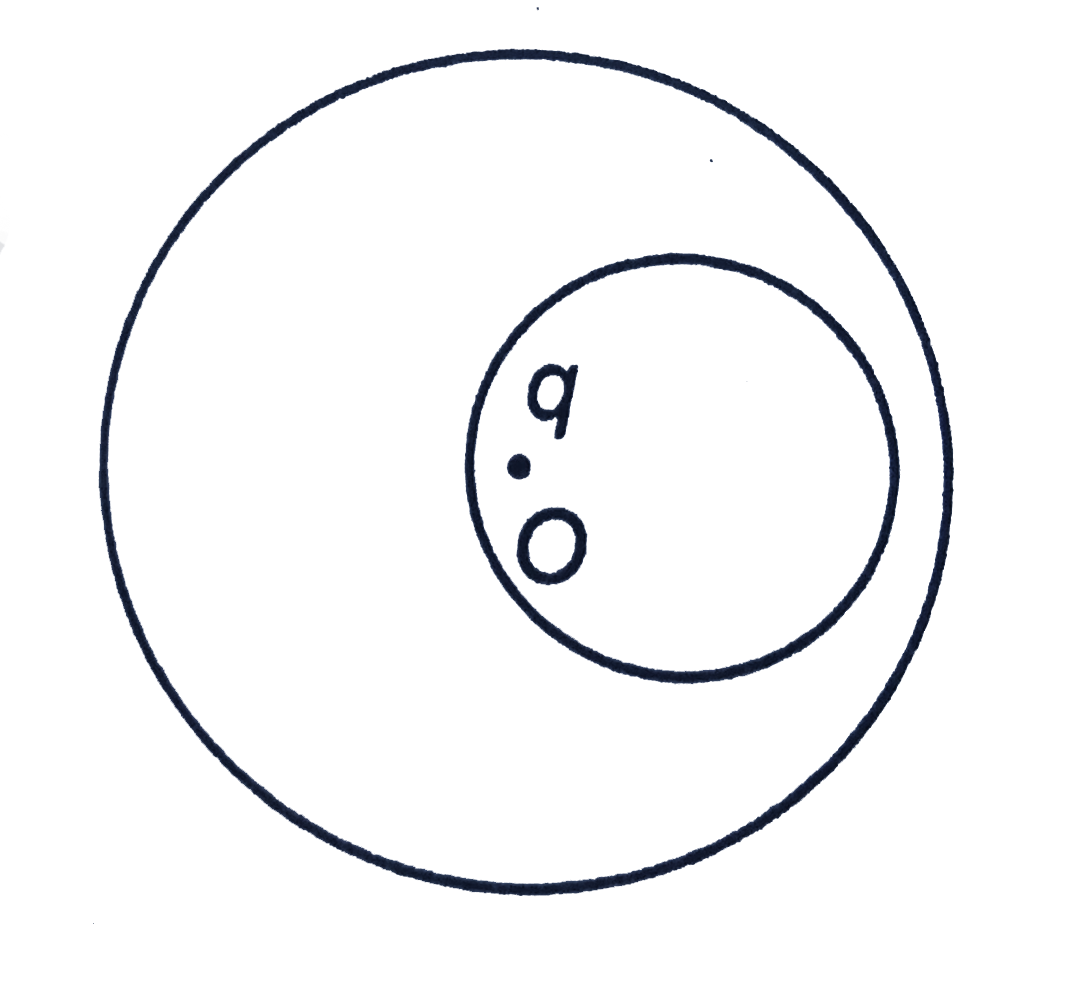
Electric field due to induced charged at S increases
Electric field due to induced charge at S decreases
Electric field due to induced charge at S first increase then decrease.
Electric field due to induced charge at S will not change.
The correct Answer is:A
Electric due '-q' at 'S' is equal to electric field due to charge particle 'q'
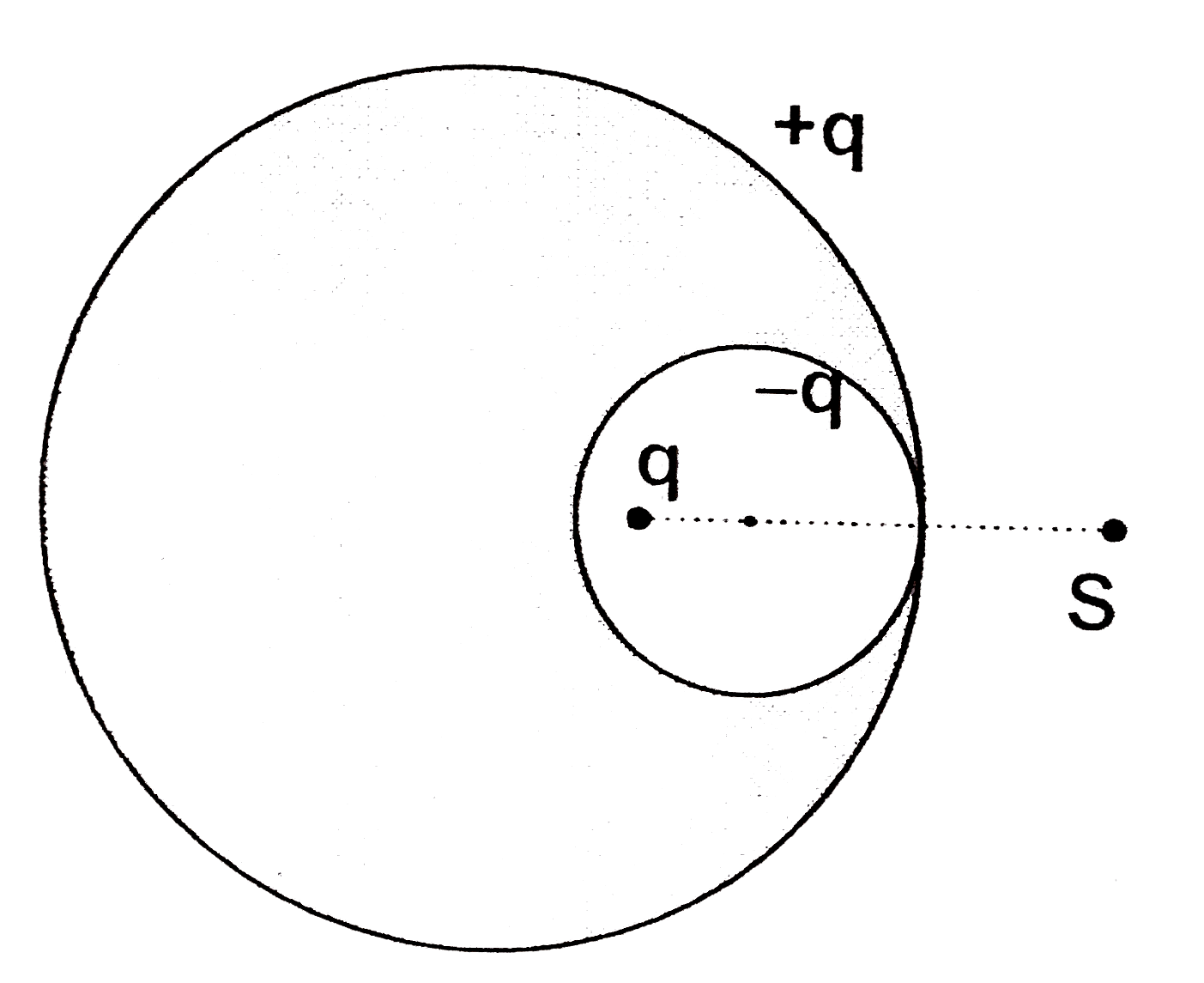
Topper's Solved these Questions
- BOOK - FIITJEECHAPTER - TEST PAPERSEXERCISE - PHYSICS747videos
TEST PAPERS
- BOOK - FIITJEECHAPTER - SIMPLE HARMONIC MOTIONEXERCISE - Assignment Problems (Objective) (Level-II)20videos
SIMPLE HARMONIC MOTION
- BOOK - FIITJEECHAPTER - WORK, ENERGY AND POWER EXERCISE - COMPREHENSIONS ( Comprehension-II)5videos
WORK, ENERGY AND POWER
Similar Questions
A spherical conductor A contains two spherical cavities as shown in Fig.2.127. The total charge on conductor itself is zero . However , there is a point charge q1 at the center of one cavity and q2 at the center of the other cavity . Another charge q3 is placed at a large distance r from the center of the spherical conductor.
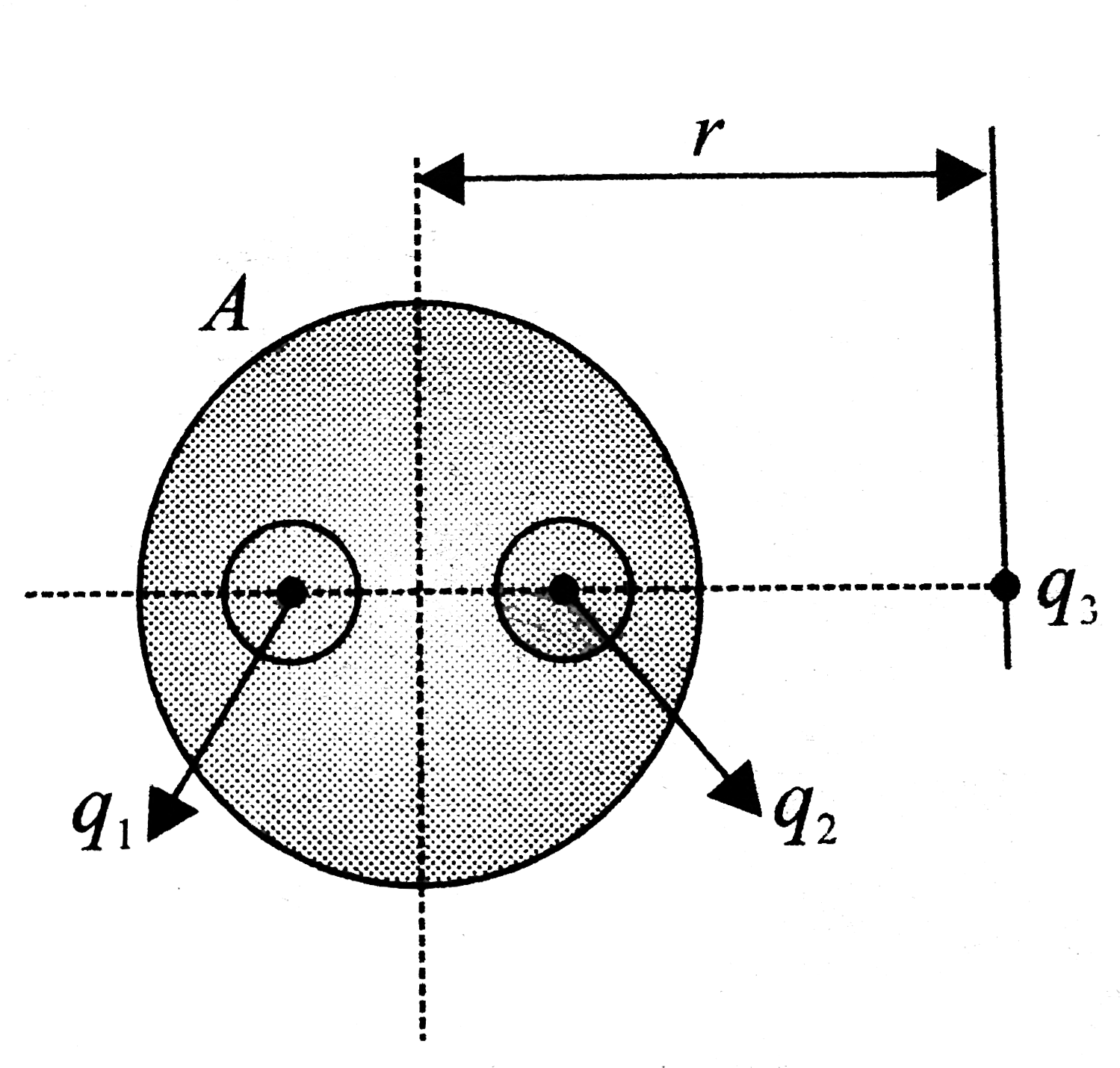
If q1 is displaced from its center slightly (being always inside the same cavity ), then the correct representation of field lines inside the same cavity isView Solutionthe figure shows a charge q placed inside a cavity in an uncharged conductor, Now if na external electric field is switched on
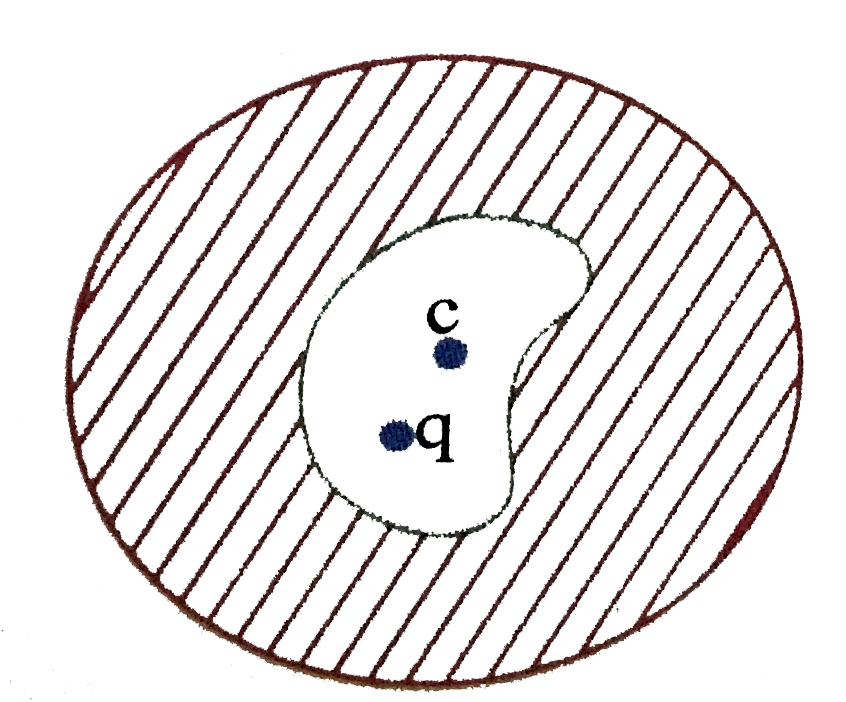 View Solution
View Solution
Knowledge Check
- Question 1 - Select One
Asseration: A point charge q is placed at centre of spherical cavity inside a spherical conductor as shown. Another point charge Q is placed outside the conductor as shown. Now as the point charge Q is pushed away from conductor, the potential difference (VA−VB) between two points A and B within the cavity of sphere remains constant.
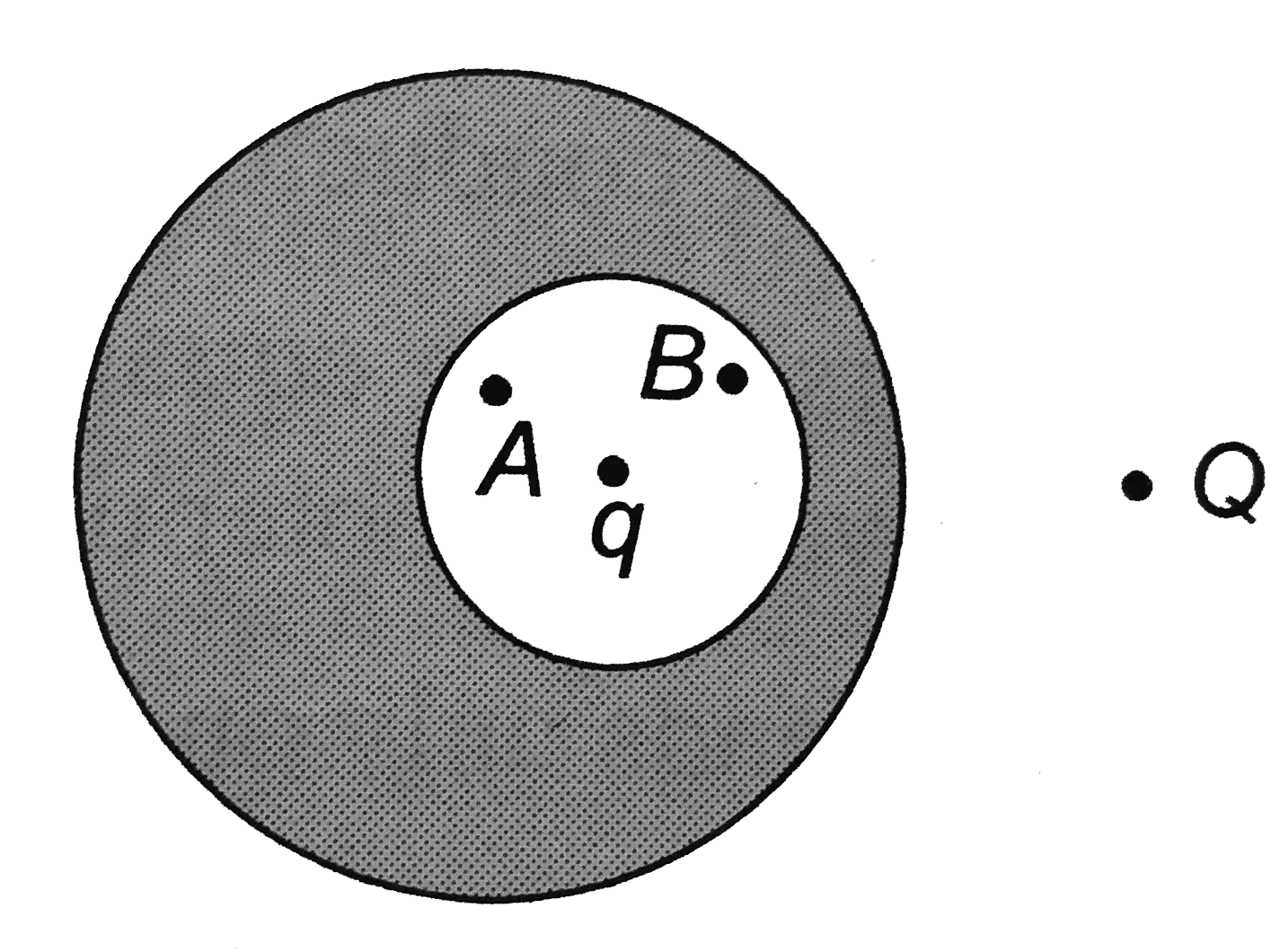
Reason: The electric field due to charges on outer surface of conductor and outside the conductor is zero at all points inside teh conductor.AIf both assertion and reason are true and reson is the correct explanation of assertion.BIf both assertion and reason are true but reason is not the correct explanation of assertion.CIf assertion is true but reason is false.DIf assertion and reason both are false. - Question 2 - Select One or More
A point charge q is placed with in the cavity of an electrically neutral conducting shell whose outer surface has spherical shape. Then,
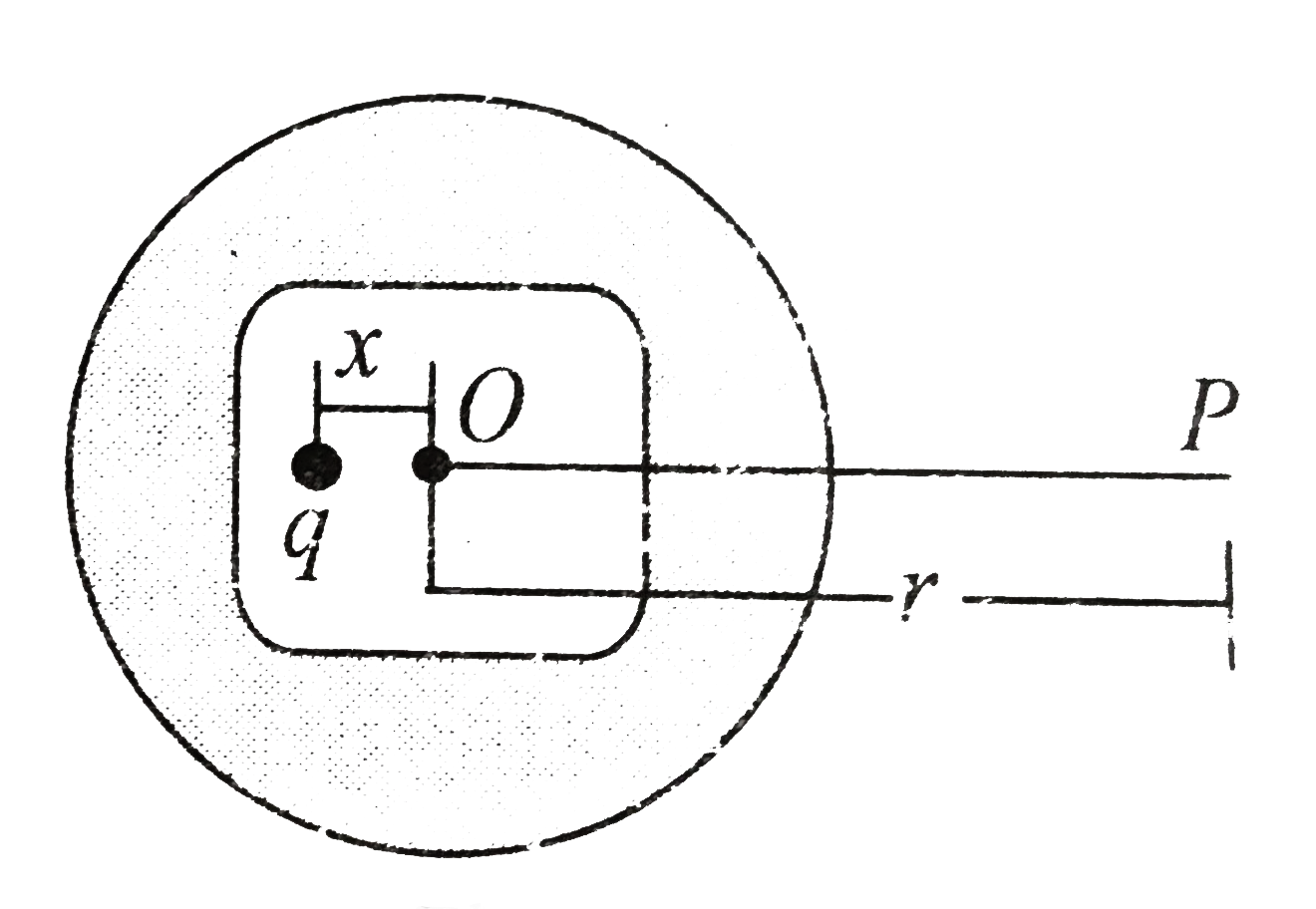 AThe potential V at point P lying outside the shell at a distance r from the centre O of the outer surface depends upon the value of x.Bpotential at P does not depend upon the value of x.Ca total charge q will be induced on the outer surface the shell which will be distributed uniformly on the outer surface.Da total charge -q will be induced on the inner surface of the shell which will be distributed nonuniformly on the inner surface.
AThe potential V at point P lying outside the shell at a distance r from the centre O of the outer surface depends upon the value of x.Bpotential at P does not depend upon the value of x.Ca total charge q will be induced on the outer surface the shell which will be distributed uniformly on the outer surface.Da total charge -q will be induced on the inner surface of the shell which will be distributed nonuniformly on the inner surface. - Question 3 - Select One
A charge Q0 is placed at the center of spherical cavity of a conductor and another charge Q is placed outside the conductor as shown in the figure. The correct statement is :
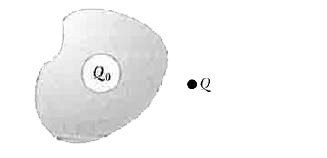 AForce on Q0 and Q are equal and oppositeBForce on Q0 is zero and force on Q is nonzeroCForce on Q and Q0 is zeroDForce on Q0 is nonzero and force on Q is zero
AForce on Q0 and Q are equal and oppositeBForce on Q0 is zero and force on Q is nonzeroCForce on Q and Q0 is zeroDForce on Q0 is nonzero and force on Q is zero
A point charge q1 is placed inside cavity 1 and another point charge q2 is inside cavity 2. A point charge q is placed outside the conductor. For the situation described above, answer the following questions.
If q1 is at the center of cavity 1, then →E at point S, at a distant r from the center of cavity 1(r>r1), due to the induced charge on outer surface of the conductor , would beView SolutionA point charge q1 is placed inside cavity 1 and another point charge q2 is inside cavity 2. A point charge q is placed outside the conductor. For the situation described above, answer the following questions.
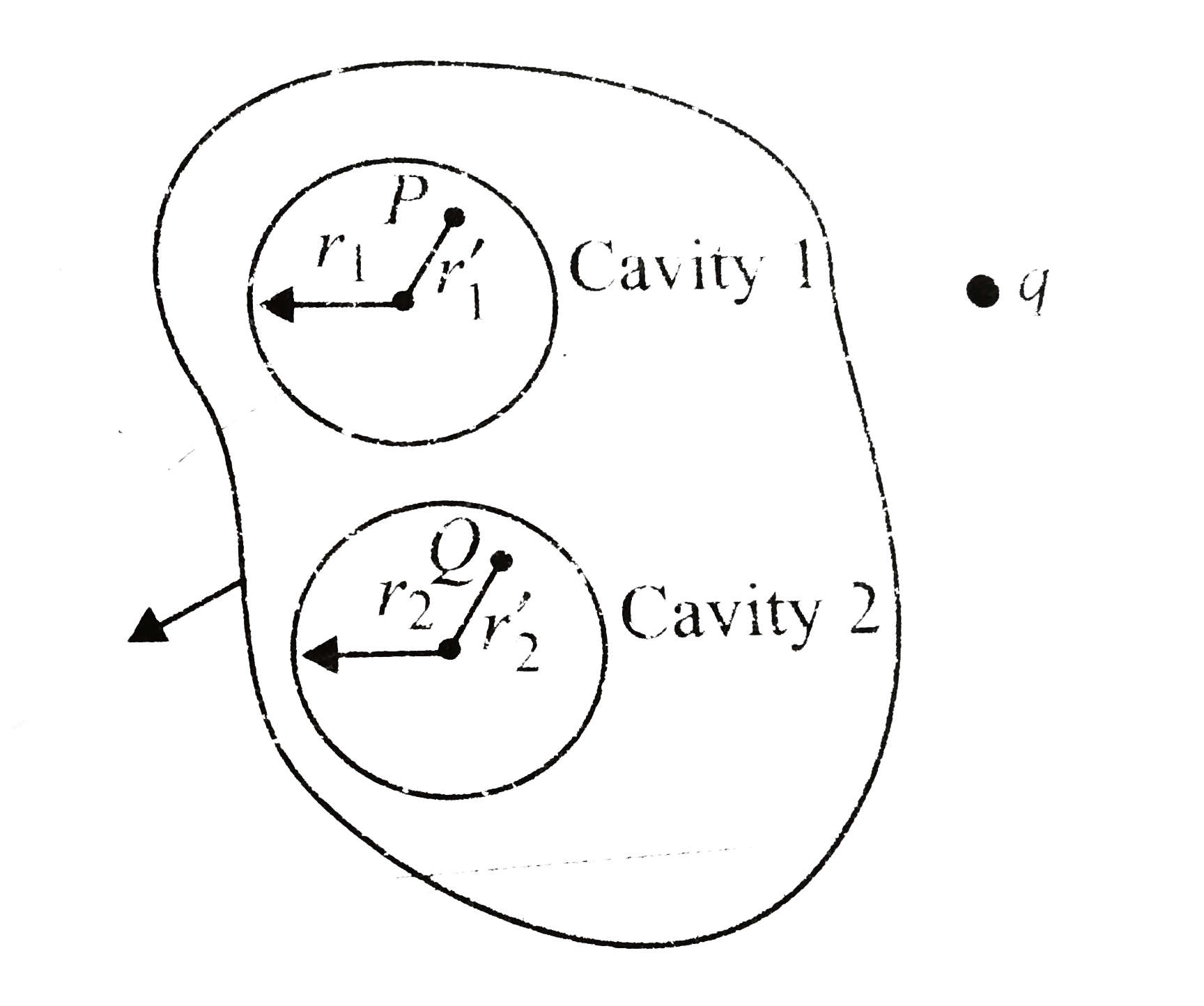
The charge on outer surface of the conductor would beView SolutionA point charge q1 is placed inside cavity 1 and another point charge q2 is inside cavity 2. A point charge q is placed outside the conductor. For the situation described above, answer the following questions.
→E inside the conductor at point S distant r from point charge q, due to charge on outer surface of the conductor, would beView SolutionConsider a conductor with a spherical cavity in it. A point charge q0 is placed at the centre of cavity and a point charge Q is placed outside conductor.
Statement-1: Total charge induced on cavity wall is equal and opposite to the charge inside
Statement-2: If cavity is surrounded by a Gaussian surface, where all parts of Gaussian surface are located inside the conductor, ∮→Ed→A=0 hence q∈duceed=−q0View SolutionA point charge q1 is placed inside cavity 1 and another point charge q2 is inside cavity 2. A point charge q is placed outside the conductor. For the situation described above, answer the following questions.
If the potential of the conductor is V0 and charge q2 is placed at the center of cavity 2, then potential at point Q isView Solution

